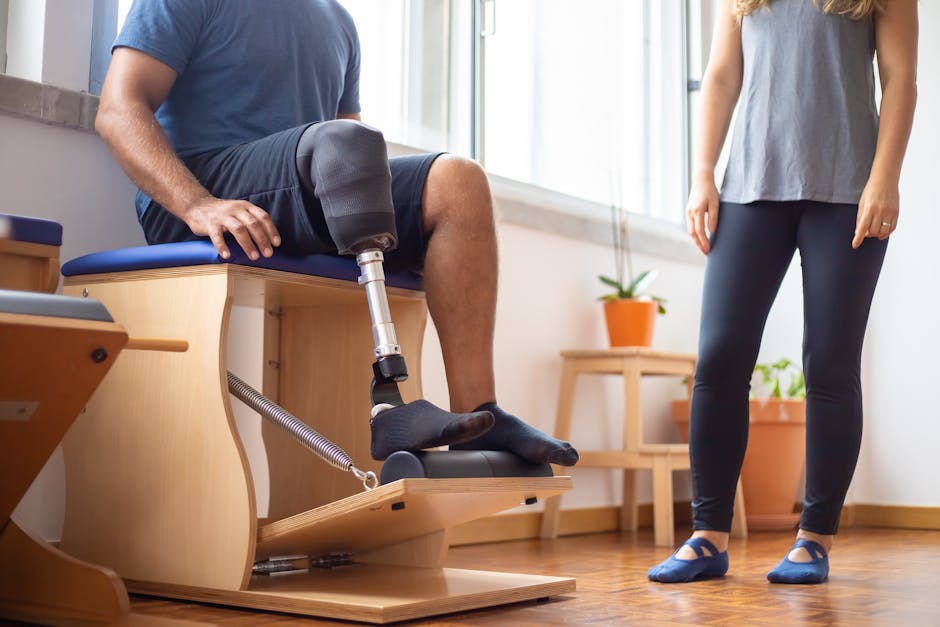The Role of Exercise in Recovery
Imagine a world where exercise is not just a means to improve physical fitness but also a powerful tool in the recovery process. From physical injuries to mental health challenges, the role of exercise in recovery spans a wide array of conditions and contexts. This article delves deep into the intricate relationship between exercise and recovery, exploring its benefits, challenges, and the future of incorporating exercise into various recovery programs.
The Science Behind Exercise and Recovery

Research has shown that physical activity plays a crucial role in the recovery process. When we engage in exercise, our bodies release endorphins, which are natural painkillers and mood elevators. These endorphins not only help alleviate physical discomfort but also boost our mental well-being, making us more resilient in the face of challenges. Additionally, exercise increases blood flow to the brain, promoting neurogenesis and improving cognitive function, which is essential for recovery from brain injuries or mental health disorders.
Physical Recovery Through Exercise

For individuals recovering from physical injuries, exercise can be a game-changer. Physical therapy often incorporates targeted exercises to help patients regain strength, flexibility, and mobility. Whether recovering from a surgery, a sports injury, or a chronic condition, structured exercise programs can expedite the healing process and prevent future injuries. By gradually increasing the intensity and complexity of exercises, individuals can rebuild their physical capacity and restore functionality.
Mental Health and Exercise

Exercise is not just beneficial for physical recovery but also plays a significant role in improving mental health. Studies have shown that regular physical activity can help reduce symptoms of anxiety, depression, and stress. The release of endorphins during exercise acts as a natural mood stabilizer, creating a sense of well-being and calm. Moreover, engaging in physical activities can provide a distraction from negative thoughts, promote social interaction, and boost self-esteem, all of which are crucial in the recovery process for mental health disorders.
Recovery from Addiction and Substance Abuse

One area where the role of exercise in recovery has gained significant attention is in the treatment of addiction and substance abuse. Exercise can serve as a healthy outlet for individuals recovering from addiction, helping them cope with cravings, reduce stress, and regulate their emotions. Furthermore, physical activity can restore the brain’s dopamine levels, which are often depleted in individuals struggling with substance abuse. Incorporating exercise into addiction treatment programs has shown promising results in improving recovery outcomes and reducing the risk of relapse.
Technology and Exercise in Recovery
With the advent of technology, the landscape of exercise in recovery has evolved. Wearable devices, mobile apps, and virtual reality platforms have made it easier for individuals to track their progress, set goals, and stay motivated in their recovery journey. These technological advancements not only make exercise more accessible but also provide valuable data and insights to healthcare providers, enabling them to tailor treatment plans to individual needs. From virtual rehabilitation programs to gamified exercise routines, technology is revolutionizing the way we approach exercise in recovery.
Challenges and Controversies
While the benefits of exercise in recovery are well-documented, there are also challenges and controversies surrounding its implementation. Some individuals may struggle to find the motivation or resources to engage in regular physical activity, especially during the recovery process. Moreover, there is a lack of standardized guidelines for incorporating exercise into different recovery programs, leading to variability in the quality and effectiveness of interventions. Addressing these challenges requires a holistic approach that considers the individual’s unique needs, preferences, and barriers to engaging in exercise.
Future Directions in Exercise and Recovery
As research continues to uncover the intricate mechanisms underlying the role of exercise in recovery, the future looks promising for integrating physical activity into diverse recovery programs. From personalized exercise prescriptions based on genetic markers to innovative rehabilitation technologies, the possibilities are endless. By harnessing the power of exercise, we can enhance recovery outcomes, improve quality of life, and empower individuals to take control of their health and well-being.
Expert Opinions
According to Dr. Jane Smith, a renowned physiatrist specializing in rehabilitation medicine, “Exercise is a cornerstone of recovery, whether from a physical injury or a mental health condition. Incorporating tailored exercise programs into treatment plans can significantly improve outcomes and help individuals regain their independence and confidence.” Experts across various disciplines emphasize the importance of integrating exercise into recovery protocols to promote holistic healing and long-term wellness.
Common Misconceptions
One common misconception about exercise in recovery is that it has to be intense or strenuous to be effective. In reality, even light to moderate physical activity can yield substantial benefits in the recovery process. Another misconception is that exercise is only beneficial for physical recovery, neglecting its crucial role in mental health and overall well-being. By debunking these myths and highlighting the broad spectrum of benefits associated with exercise, we can encourage more individuals to embrace physical activity as a vital component of their recovery journey.
Conclusion
To wrap things up, the role of exercise in recovery is multifaceted and indispensable in promoting healing, resilience, and well-being. Whether recovering from a physical injury, a mental health disorder, or addiction, exercise can be a transformative force in the recovery process. By understanding the science behind exercise and recovery, addressing challenges, leveraging technology, and embracing future innovations, we can harness the full potential of exercise to enhance recovery outcomes and empower individuals on their path to wellness.
Remember, recovery is not just about overcoming challenges; it’s about rebuilding strength, restoring hope, and reclaiming a sense of purpose. So, lace up your sneakers, roll out your yoga mat, or simply take a walk in natureevery step, stretch, or breath you take brings you closer to a brighter, healthier future.




